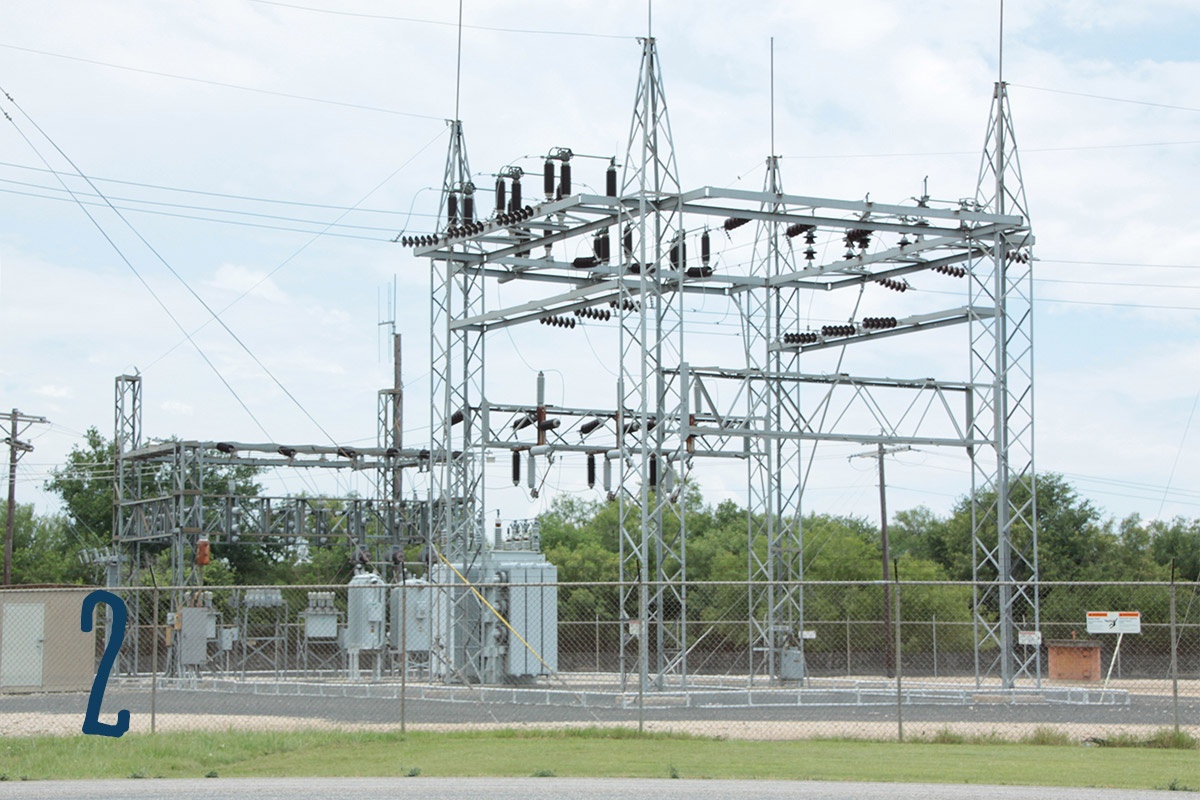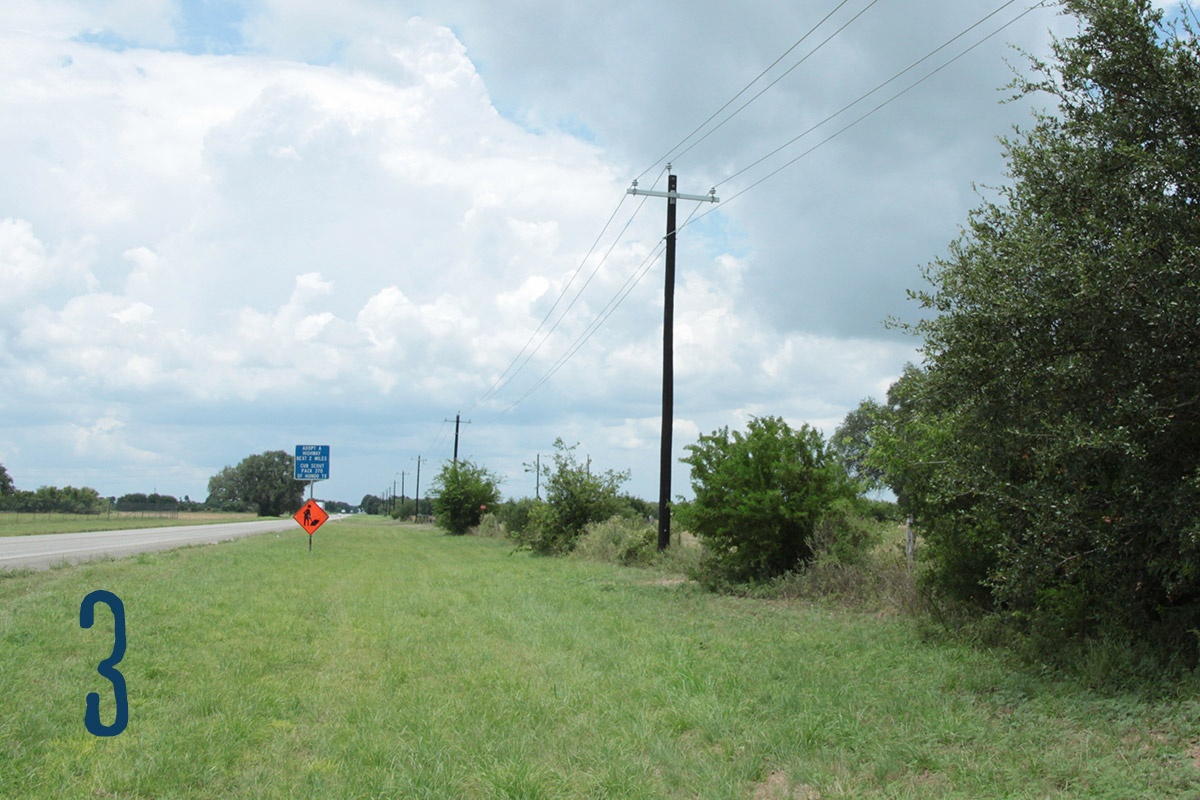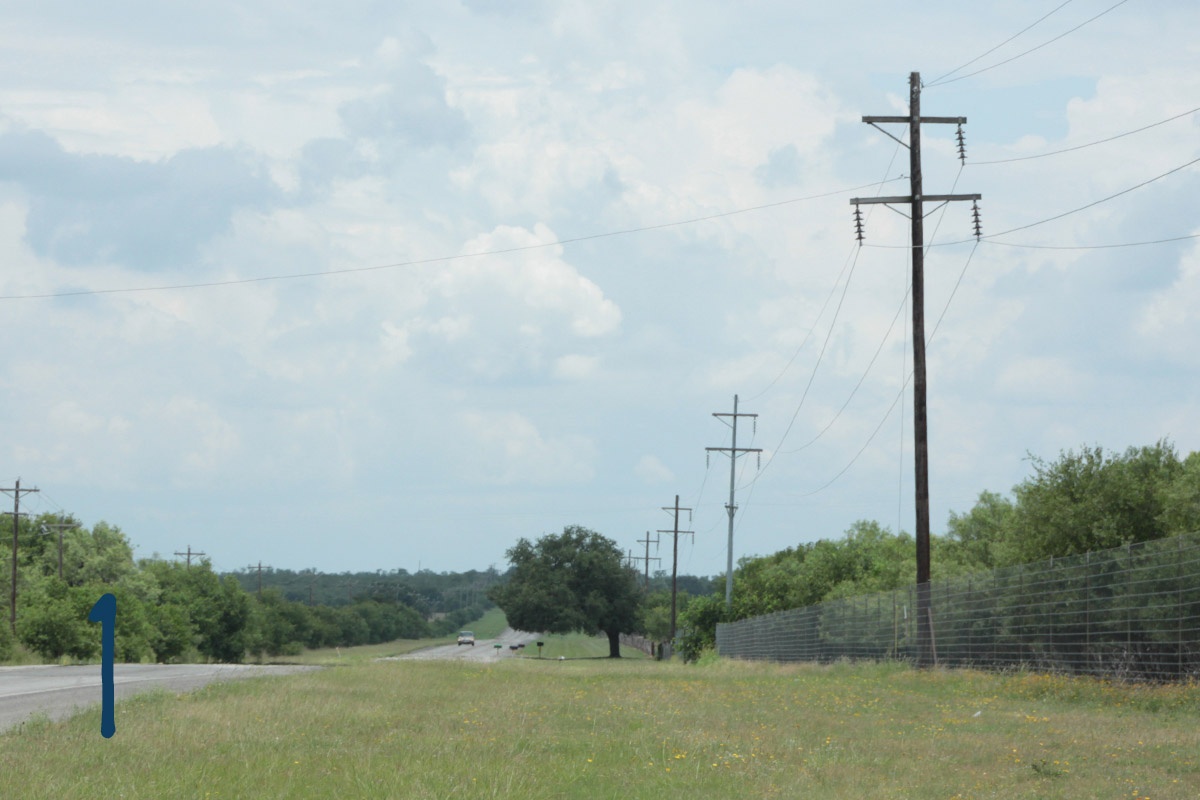Take a drive with a lineman, and they can tell you about every piece of electrical equipment you see—most of which you never even notice. They can also tell you if it is a cooperative line or belongs to a different utility, just based on how the line is built. Here is a very brief look at the major parts of the electric system, in case you ever wondered what you’re looking at.
1. Transmission Lines
Large amounts of power, measured by watts, are delivered by transmission lines. These lines are energized with very high voltage in order to move the power long distances. Insulators on the towers prevent the power from flowing to the towers or the ground.

2. Substations
The substation is the connection between the transmission and distribution systems. That’s one reason so much equipment is seen in them: transformers, insulators, circuit breakers, lightning arrestors and more. Transformers at distribution substations and large industrial sites reduce the voltage to a lower level, typically 7,200 or 14,400 volts.

3. Distribution Lines
The lines seen along rural roads can be three-phase distribution lines, as seen in this picture, or single-phase distribution lines, which are commonly seen next to homes. These lines are energized at 7,200 or 14,400 volts. Transformers on the utility poles lower the voltage to between 120 and 480 volts to serve residential homes and small businesses.
Did You Know…
The cooperative owns and maintains more than 9,500 miles of distribution line. That’s enough to stretch from Rio Grande City, where Medina EC’s southernmost office is, to Anchorage, Alaska, and back and still have line left over.


